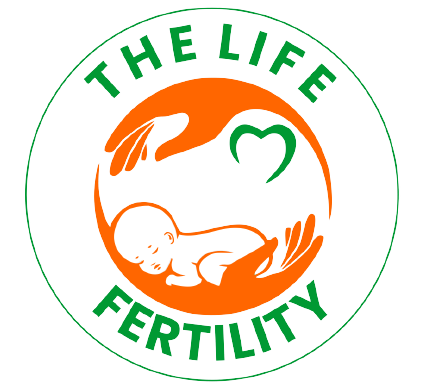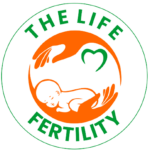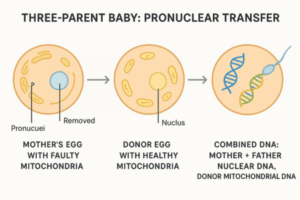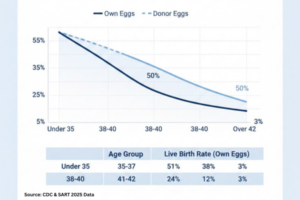What is Assisted Reproductive Technology (ART)?
Assisted reproductive technology (ART) represents a collection of medical procedures employed to address infertility. At its core, ART involves the manipulation of eggs and sperm outside the human body to facilitate conception. This distinguishes it from other fertility treatment approaches that primarily focus on enhancing natural reproductive processes.
A well-known and highly effective form of ART is In Vitro Fertilization (IVF). While IVF will be a central focus in subsequent parts of this discussion, it’s important to understand that ART encompasses a broader range of techniques.
These can include procedures like Intrauterine Insemination (IUI), where sperm is directly placed into the uterus, Gamete Intrafallopian Transfer (GIFT), and Zygote Intrafallopian Transfer (ZIFT), although IVF remains the most frequently utilized and often the most successful ART for many infertility solutions.
Ultimately, assisted reproductive technology (ART) offers a tangible pathway and significant hope for individuals and couples encountering obstacles on their road to parenthood. By directly intervening in the fertilization or early embryonic stages, ART can overcome a variety of reproductive challenges
The Significance of Assisted Reproductive Technology (ART) in Addressing Infertility
The significance of assisted reproductive technology (ART) in the realm of infertility solutions cannot be overstated. For numerous individuals and couples facing difficulties conceiving, ART provides a crucial and often the only viable path to achieving their dream of building families.
The applications of ART are diverse, addressing a wide spectrum of underlying reproductive issues.
Consider instances where fallopian tubes are blocked or damaged, preventing the natural union of egg and sperm. Here, assisted reproductive technology (ART), particularly IVF, bypasses this physical barrier by facilitating fertilization in a laboratory setting.
Similarly, for individuals experiencing ovulatory disorders, where the release of eggs is irregular or absent, ART allows for controlled ovarian stimulation and precise timing of egg retrieval.
Conditions like endometriosis, which can distort pelvic anatomy and interfere with fertility, can also be addressed through assisted reproductive technology (ART).
In cases of male factor infertility, where sperm count, motility, or morphology are compromised, techniques within assisted reproductive technology (ART), such as intracytoplasmic sperm injection (ICSI), can directly assist in fertilization. Even in situations of unexplained infertility, where the precise cause of conception difficulties remains elusive, ART offers a proactive approach.
Furthermore, the significance of assisted reproductive technology (ART) extends to individuals of advanced maternal age, where natural fertility declines. It also provides options for single women and same-sex couples who wish to experience parenthood through the use of donor sperm or eggs.
The integration of genetic testing (PGT) within certain ART procedures adds another layer of significance, allowing for the screening of embryos for genetic disorders before transfer, contributing to healthier outcomes.
In essence, assisted reproductive technology (ART) acts as a powerful tool, offering tailored fertility treatment and expanding the possibilities for building families across a range of challenging circumstances.
Emotional Significance: Hope and Navigating the Assisted Reproductive Technology (ART) Journey
The journey of infertility is often marked by significant emotional distress, characterized by feelings of loss, frustration, and anxiety. In this context, assisted reproductive technology (ART) emerges as a powerful source of hope for individuals and couples yearning for parenthood.
The possibility that assisted reproductive technology (ART) can overcome biological barriers offers a tangible light at the end of a challenging emotional tunnel for those seeking fertility treatment.
However, it is crucial to acknowledge that the assisted reproductive technology (ART) journey itself is not without its emotional complexities. The process can be demanding, involving numerous appointments, medical procedures, and the constant awareness of potential outcomes.
The anxiety associated with each stage of assisted reproductive technology (ART), from ovarian stimulation to embryo transfer and the subsequent waiting period, can be considerable. Individuals undergoing ART often find themselves navigating a delicate balance between hope and the fear of disappointment.
The “two-week wait,” the period between embryo transfer and pregnancy testing in IVF, a key ART procedure, is particularly emotionally intense. During this time, individuals may experience heightened anxiety, scrutinizing every physical sensation for signs of success or failure.
Feelings of isolation can also arise, as the assisted reproductive technology (ART) process can feel very personal and sometimes isolating from those who have not experienced similar challenges.
Therefore, while ART offers a beacon of hope, recognizing and addressing the emotional well-being of individuals throughout their assisted reproductive technology experience is paramount.
Access to emotional support, whether through counseling, support groups, or understanding healthcare providers, plays a vital role in navigating the inherent emotional challenges of this path to building families. Understanding these emotional aspects is a significant part of grasping the overall impact of assisted reproductive technology (ART).
Practical Significance: Understanding the Initial Steps in Assisted Reproductive Technology (ART)
Embarking on the path of assisted reproductive technology (ART) involves several key initial steps. For individuals and couples considering ART as a potential infertility solution, understanding these early stages is crucial. The journey typically begins with a comprehensive consultation at a specialized fertility clinic.
Here, a reproductive endocrinologist, a physician specializing in hormonal and reproductive disorders, will conduct a thorough review of the individual’s or couple’s medical history.
A crucial part of the initial assessment involves establishing an accurate infertility diagnosis. This may entail various tests and evaluations to identify the underlying factors contributing to the difficulty in conceiving.
These diagnostic procedures can range from blood tests to assess hormone levels and ovarian function, to imaging studies like ultrasounds to evaluate the uterus and ovaries, and semen analysis for male partners. The specific types of infertility identified through these evaluations will help guide the selection of the most appropriate assisted reproductive technology (ART) approach.
Following the initial evaluation and diagnosis, the reproductive endocrinologist will discuss the available assisted reproductive technology (ART) options. While this series focuses on IVF as a significant form of ART, other relevant techniques might be discussed depending on the specific circumstances.
It’s important to understand that treatment plans within assisted reproductive technology (ART) are highly personalized, tailored to address the unique needs and challenges of each individual or couple on their road to parenthood. This initial phase of information gathering and assessment lays the groundwork for the subsequent, more intensive stages of ART.
The Evolving Significance: Advancements in Assisted Reproductive Technology (ART)
The field of assisted reproductive technology (ART) is dynamic, constantly evolving through ongoing research and technological innovation. These advancements have significantly enhanced the effectiveness and accessibility of various fertility treatment options within ART.
One notable area of progress involves improvements in embryo selection. Techniques like time-lapse imaging allow embryologists to continuously monitor embryo development, providing more detailed insights for identifying embryos with the highest potential for successful implantation.
Genetic testing of embryos (PGT) has also become an increasingly significant aspect of assisted reproductive technology (ART). Preimplantation genetic testing for aneuploidy (PGT-A) screens embryos for chromosomal abnormalities, potentially increasing implantation rates and reducing the risk of miscarriage.
Furthermore, preimplantation genetic testing for monogenic disorders (PGT-M) allows families with known genetic conditions to select unaffected embryos.
Cryopreservation techniques within assisted reproductive technology (ART) have also seen substantial improvements, particularly with the widespread adoption of vitrification, a rapid freezing method that has significantly increased the survival rates of frozen eggs and embryos. This has provided greater flexibility in treatment planning and fertility preservation.
Moreover, there is an increasing focus on personalized protocols within assisted reproductive technology (ART), tailoring medication dosages and treatment strategies based on individual patient characteristics to optimize outcomes. These continuous advancements underscore the evolving significance of ART in helping more individuals achieve their goal of building families.
Conclusion:
Assisted Reproductive Technology (ART) has revolutionized the landscape of fertility treatment, offering hope and tangible solutions for individuals and couples facing infertility. From the emotional support required to navigate the journey to the practical steps involved and the constant advancements in techniques, ART’s significance is multifaceted.
While ART offers a pathway to parenthood, success rates can vary. Factors such as age, the specific type of infertility, and the clinic chosen all play a role. For example, women under 35 often experience higher success rates with IVF, around 50% per cycle, while this rate can drop to 10% or less for women over 40.
The type of ART procedure also matters, with some techniques showing higher success depending on the specific infertility diagnosis. It’s also important to note that the cumulative live birth rates from ART can approach those of natural fecundity, especially with multiple cycles.
As ART continues to evolve, it remains a vital option for many seeking to build families, underscoring its enduring significance in the modern world.
What exactly is Assisted Reproductive Technology (ART)?
Assisted reproductive technology (ART) encompasses medical procedures where eggs and sperm are handled outside the body to help achieve pregnancy. In Vitro Fertilization (IVF) is the most well-known and frequently utilized type of assisted reproductive technology (ART).
Is Assisted Reproductive Technology (ART) always successful?
The success rates of assisted reproductive technology (ART) vary depending on several factors, including the age of the individuals involved, the underlying causes of infertility, and the specific assisted reproductive technology procedure employed. It is essential to have an open discussion about potential success rates with your fertility treatment team.
What are the initial steps when considering Assisted Reproductive Technology (ART)?
The first step usually involves a consultation with a reproductive endocrinologist at a fertility clinic. During this meeting, your medical history will be reviewed, and preliminary tests may be conducted to arrive at an infertility diagnosis, paving the way for discussing suitable assisted reproductive technology (ART) options
What are some common examples of Assisted Reproductive Technology (ART) besides IVF?
While IVF is a central focus when discussing assisted reproductive technology (ART), other procedures fall under this umbrella, including Intrauterine Insemination (IUI), Gamete Intrafallopian Transfer (GIFT), and Zygote Intrafallopian Transfer (ZIFT). However, IVF remains a cornerstone of modern assisted reproductive technology (ART).
Who typically seeks Assisted Reproductive Technology (ART)?
Individuals and couples experiencing various forms of infertility, such as blocked fallopian tubes, ovulatory disorders, and male factor infertility, often turn to assisted reproductive technology (ART) for infertility solutions. It is also a valuable option for single individuals and same-sex couples looking to build families.




